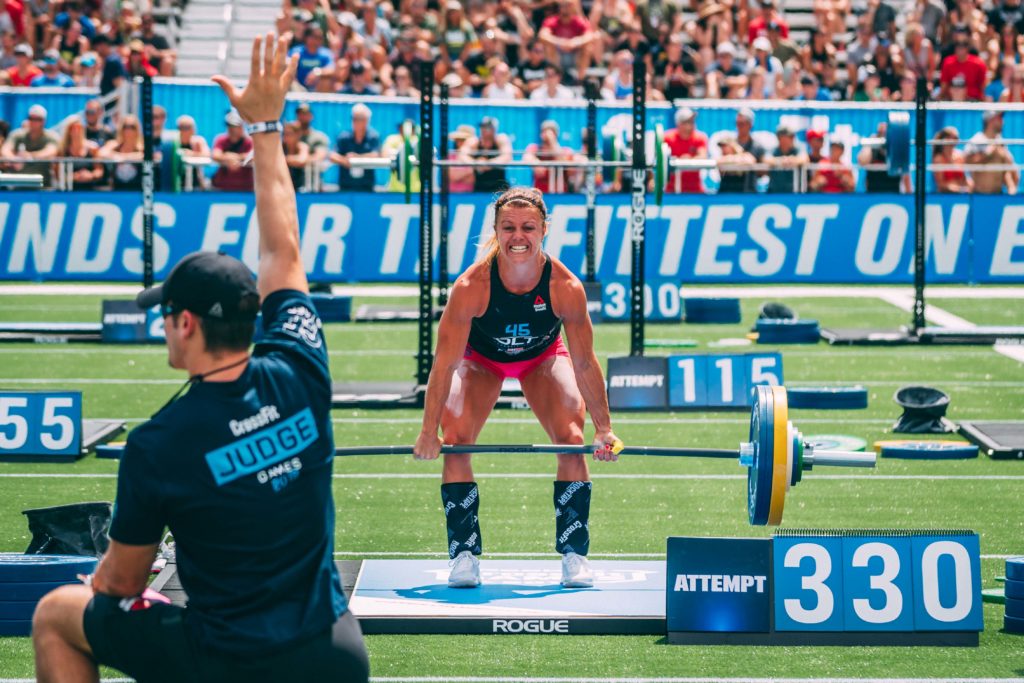
4 Tips for Hinging Greatness
Written by Kirsten Ahrendt (with contribution from Tino Marini)
I want to open a dialogue on hinging and some points of performance that I think are important to reinforce in regards to Deadlifts, Romanian Deadlifts, Death Marches, Single-Leg Romanian Deadlifts, etc. (internal torque movements) that I experimented with at the StrongFit coach’s week a couple months ago.
1. Obliques – External obliques (your side abs) should be on throughout your full range of motion (ROM) on a hinge. If you hinge well at the hip to a certain point, and then lose it and go to the back, it’s a safe bet you also lost engagement of your obliques. Practice squeezing them while standing. Once you can find them and know they are turned on, practice hinging while squeezing them. Is there a point in your ROM where you lose the squeeze? If so, keep practicing, and in the meantime, keep your hinging in the squeezing ROM.
2. Breath – I have been cueing folks in warm-ups with “wall ball dimmels” to only go as far down as they can inhale through their nose (with obliques active), and then exhale through their mouth on the way back up. Julien Pineau (of StrongFit) discusses frequently in his movement seminars that your active ROM ends where you’re inhale through your nose ends (while supporting muscles are active). An example of this would be to activate your pec, then take your arm through flexion. Your active ROM ends where you stop inhaling through nose or where your pec is no longer engaged. I find this breathing pattern especially useful for top-down movements like RDLs, Death Marches, etc.
3. Buttcheek – One cue I really like is, “show someone the underside of your butt cheek” for the eccentric portion. I find it helps people move from hip rather than low back. I can’t type the cue I use for the concentric. But you should get the picture. In regards to butt cheek cue…it’s not about tucking the butt under on the eccentric, I imagine trying to show someone behind you the underside of the bottom of your butt cheek, right where it meets your hamstring. I find this one more useful on folks that can’t quite figure out how to not just bend and reach for the floor from their lower back.
4. Grip with the toes! – This also seems to get your hamstrings firing nicely as you hinge and helps reinforce that the entire internal torque chain is active. This one is actually really interesting to play around with. Stand in a hinged position and grip your toes into the ground. You might not notice much right away. Now, lift your big toes off the floor (while standing in the hinge). Now you feel it in your lower back which is NOT where we want you to feel your hinging – it means your hamstrings are doing their share. It’s amazing that something so small as your big toe placement can make such a difference in this movement pattern. No wonder so many people complain of low back tightness or pain with hinging movements like deadlifts and especially kettlebell swings. Just look around next time you’re in a group doing one of those movements and notice how many toes are off the floor. Are yours?
No matter which of these is your focus, the theme is the same. Only move through the ROM that you are able to complete with these cues in check. Make note of where you are and what is keeping you from full and proper ROM then, of course, work to improve your mechanics and increase your ROM safely over time. This will not only keep you in the injury-free zone but also ensure you are making those #gainz!
Also Check Out…
Creating Torque Through Internal Rotation